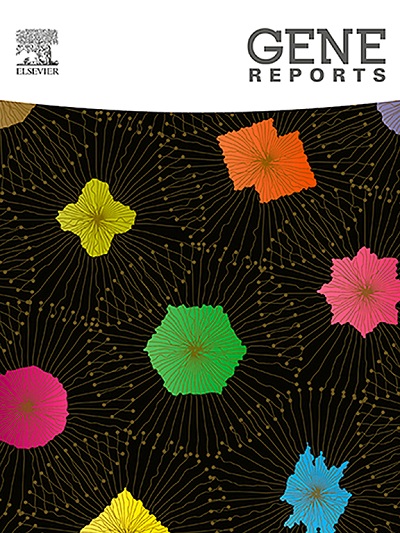Serum interleukin-37 and its gene polymorphism (rs3811047) in Egyptian patients with alopecia areata
IF 1
Q4 GENETICS & HEREDITY
引用次数: 0
Abstract
Background
Alopecia areata (AA) is an immune-mediated disorder that manifests by non-scarring hair loss. Interleukin (IL)-37 is an anti-inflammatory cytokine that plays a main role in autoimmune disease.
Subjects and methods
This study incorporated 40 alopecia areata patients and 45 healthy individuals as control group. Serum IL-37 levels were measured in all patients and control group by Enzyme-Linked Immunosorbent Assay (ELISA) technique and its gene polymorphism (rs3811047) was assessed using real-time polymerase chain reaction (RT-PCR).
Results
Serum IL-37 level was elevated in alopecia areata patients compared with controls in a statistically significant manner. Also, significant positive correlation was found between Severity of Alopecia Tool (SALT) score and serum level of IL-37(r = 0.371, p = 0.018). Furthermore, IL-37 level was significantly elevated in patients with SALT score severity (S2–4) as well as in patients with severe degree of AA (p = 0.049 and p = 0.006, respectively).
Regarding IL-37gene polymorphism (rs3811047), no significant relation between various genotypes of rs3811047 and risk of AA disease was detected. Conclusion: Serum IL-37 mostly affects pathophysiology of alopecia areata and correlates with the severity of the condition. IL-37 gene polymorphism (rs3811047) has not been associated with the abovementioned disease.
求助全文
约1分钟内获得全文
求助全文
来源期刊

Gene Reports
Biochemistry, Genetics and Molecular Biology-Genetics
CiteScore
3.30
自引率
7.70%
发文量
246
审稿时长
49 days
期刊介绍:
Gene Reports publishes papers that focus on the regulation, expression, function and evolution of genes in all biological contexts, including all prokaryotic and eukaryotic organisms, as well as viruses. Gene Reports strives to be a very diverse journal and topics in all fields will be considered for publication. Although not limited to the following, some general topics include: DNA Organization, Replication & Evolution -Focus on genomic DNA (chromosomal organization, comparative genomics, DNA replication, DNA repair, mobile DNA, mitochondrial DNA, chloroplast DNA). Expression & Function - Focus on functional RNAs (microRNAs, tRNAs, rRNAs, mRNA splicing, alternative polyadenylation) Regulation - Focus on processes that mediate gene-read out (epigenetics, chromatin, histone code, transcription, translation, protein degradation). Cell Signaling - Focus on mechanisms that control information flow into the nucleus to control gene expression (kinase and phosphatase pathways controlled by extra-cellular ligands, Wnt, Notch, TGFbeta/BMPs, FGFs, IGFs etc.) Profiling of gene expression and genetic variation - Focus on high throughput approaches (e.g., DeepSeq, ChIP-Seq, Affymetrix microarrays, proteomics) that define gene regulatory circuitry, molecular pathways and protein/protein networks. Genetics - Focus on development in model organisms (e.g., mouse, frog, fruit fly, worm), human genetic variation, population genetics, as well as agricultural and veterinary genetics. Molecular Pathology & Regenerative Medicine - Focus on the deregulation of molecular processes in human diseases and mechanisms supporting regeneration of tissues through pluripotent or multipotent stem cells.
 求助内容:
求助内容: 应助结果提醒方式:
应助结果提醒方式:


